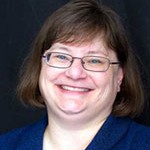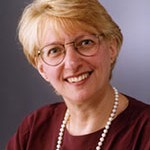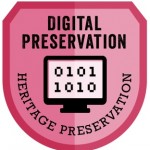 Digitization has provided opportunities for institutions to create digital surrogates for fragile and endangered artifacts, while providing greater access to cultural heritage materials. Libraries, archives, and museums are also increasingly active in preserving community materials that are “born” digital, including photographs, audio, video, and websites.
Digitization has provided opportunities for institutions to create digital surrogates for fragile and endangered artifacts, while providing greater access to cultural heritage materials. Libraries, archives, and museums are also increasingly active in preserving community materials that are “born” digital, including photographs, audio, video, and websites.
This five-part course reviewed best practices for the care of digital materials and featured case studies that illustrate the best, and worst, experiences of cultural heritage institutions in their efforts to prevent a digital dark age. It is a part of the Caring for Yesterday’s Treasures—Today series. In addition to webinar recording links below, you will also see transcripts of those recordings, resources that were compiled by the course instructors, and PowerPoint presentations.
Webinar 1: Overview of digital preservation
Tuesday, April 2, 2013, 2:00 – 3:30 pm EDT
Instructor: Lauren Goodley
Why is it important to preserve digital materials? What items should we be preserving and why? This session will provide a general introduction to the series and offer strategies to help you identify and select items from your collections for digitization and digital preservation.
CLICK HERE FOR WEBINAR #1 RECORDING
For closed captions, please access this via this link.
PowerPoint slides for Webinar 1: Overview of digital preservation
Sample Documents requested in Webinar 1
Answers to Questions asked in Webinar 1
Webinar 1 Transcript
Links referenced in presentation:
Overview
Digital Stewardship Glossary of Terms, National Digital Stewardship Alliance
Society of American Archivists Jump In! Initiative. After May, participant narratives of their digital inventory projects will be posted here.
Short videos or ‘elevator speeches’ of the DPOE curriculum. (The Cliff’s Notes!)
The Signal blog. A wide variety of topics and authors, browse for items of interest.
Networking and Listservs
Society of American Archivists listserv. Browse for digital topics.
American Library Association Preservation and Reformatting Section
Digital preservation standards
Open Archival Information System (OAIS) is extremely in-depth and the conceptual end can be disorienting. Brian Lavoie’s introduction (pdf) explains the model in clear language.
Digital Preservation Management Tutorial gives a good overview of OAIS and Trusted Digital Repositories.
Trustworthy Digital Repositories (pdf)
OAIS Reference Model (pdf) (Open Archival Information System)
Additional Resources:
Library of Congress Digital Preservation
The Signal blog
Calendar of training workshops
Short videos or ‘elevator speeches’ of the DPOE curriculum
Personal Digital Archiving Day-handouts and videos for your patrons
Digital Preservation Management Tutorial. Based on OAIS, this tutorial focuses on overarching concepts. Also gives a good overview of OAIS and Trusted Digital Repositories.
Peter B. Hirtle, Emily Hudson, and Andrew T. Kenyon, Copyright and Cultural Institutions: Guidelines for Digitization for U.S. Libraries, Archives, and Museums. Ithaca, NY: Cornell University Library Press, 2009.
Webinar 2: Convert it to preserve it: Digitization and file conversion
Thursday, April 4, 2013, 2:00 – 3:30 pm EDT
Instructor: Jacob Nadal
Caring for digital objects often requires converting them from analog into digital or from a less common digital format to one that will be more likely to stand the test of time. In this session, we’ll review recommended formats for photographs, documents, audio, and video and discuss strategies for digitization and conversion including tips on working with vendors.
CLICK HERE FOR WEBINAR #2 RECORDING
For closed captions, please access this via this link.
PowerPoint slides for Course Introduction: The What and Whys of Digital Preservation
PowerPoint slides for Webinar 2: Convert it to preserve it: Digitization and file conversion
Answers to Questions asked in Webinar 2
Webinar 2 Transcript
Links referenced in presentation:
Sources of standards and specifications
Minimum Capture Guidelines (coming this year), ALA Association for Library Collections and Technical Services, Preservation and Reformatting Section (PARS)
Federal Agencies Digitization Guidelines Initiative (FADGI)
Discussion Lists
Google Digital Curation group
DigiPres listserv (via ALA)
Professional Groups
Association of Moving Image Archivists (AMIA)
Association for Recorded Sound Collections (ARSC)
Society for Imaging Science and Technology (SIST)
Webinar 3: Describe it so you can find it: Metadata, finding aids, and digital asset management
Tuesday, April 9, 2013, 2:00 – 3:30 pm EDT
Instructor: Danielle Cunniff Plumer
This session will develop some common sense methods for describing the digital materials you have so that they can be more easily accessed in the future. We’ll discuss some of the information that can be helpful as you manage digital objects for the long term and review resources you can use for more in-depth exploration of this topic.
CLICK HERE FOR WEBINAR #3 RECORDING
For closed captions, please access this via this link.
PowerPoint slides for Webinar 3: Describe it so you can find it
Webinar 3 Transcript
Answers to Questions asked in Webinar 3
Links referenced in presentation:
General
Federal Agencies Digitization Guidelines Initiative (FADGI)
Metadata
Baca, Murtha (ed.), Tony Gill, Anne J. Gilliland, and Mary S. Woodley. 2000. Introduction to Metadata: Pathways to Digital Information. Online Edition, Version 2.1.
Boyd, Doug. “A Simple Act of Digital Preservation: The Checksum and Oral History.” The DigitalOmnium, 2012-05-10.
Caplan, Priscilla. 2009. Understanding PREMIS: An overview of the PREMIS Data Dictionary for Preservation Metadata. Library of Congress Network Development and MARC Standards Office.
DCMI Usage Board. DCMI Metadata Terms. Revised 2012-06-14.
NISO. Data Dictionary: Technical Metadata for Digital Still Images. Bethesda, MD: National Information Standards Organization, 2006.
NISO. A Framework of Guidance for Building Good Digital Collections. 3rd edition. Baltimore, MD: National Information Standards Organization, 2007.
NISO. Understanding Metadata. Bethesda, MD: National Information Standards Organization, 2004.
Metadata Tools
Library of Congress Tools Showcase
BWF MetaEdit: Broadcast WAVE metadata editor
JHOVE (JSTOR/Harvard Object Validation Environment)
New Zealand Metadata Extractor
OpenRefine (formerly Google Refine)
Free Your Metadata (tips on working with Google Refine)
Phillips, Mark. “Metadata Analysis at the Command-Line.” Code4Lib Journal, 19(2013-01-15).
Copyright
Hirtle, Peter B, Emily Hudson, and Andrew T. Kenyon. Copyright and Cultural Institutions: Guidelines for Digitization for U.S. Libraries, Archives, and Museums. Ithaca, N.Y: Cornell University Library, 2009.
Society of American Archivists. Orphan Works: Statement of Best Practices. Chicago: SAA, 2009.
Copyright tools:
Copyright slider
Section 108 (Preservation Exemption) Spinner
Fair Use Evaluator
Webinar 4: Practice safe archiving: Backups, copies, and what can go wrong
Wednesday, April 10, 2013, 2:00 – 3:30 pm EDT
Instructor: Jefferson Bailey
Digital disasters happen every day. Computer hard drives fail, viruses corrupt or erase digital files, and mother nature sometimes reminds us that water and electricity don’t mix. This session will focus on policies that can help you recover from these disasters, such as making copies of your digital files and storing them in multiple locations.
CLICK HERE FOR WEBINAR #4 RECORDING
For closed captions, please access this via this link.
PowerPoint slides for Webinar 4: Practice safe archiving
Webinar 4 Transcript
Answers to Questions asked in Webinar 4
Additional checksum exercises handout
Levels of Digital Preservation handout
Links referenced in presentation:
Introduction & Overview
Thibodeau, Kenneth. “Overview of Technological Approaches to Digital Preservation and Challenges in Coming Years.” The State of Digital Preservation: An International Perspective. CLIR Report, 2002.
Physical Media Handling & Longevity
Council on Library and Information Resources (CLIR), “Care and Handling of CDs & DVDs”
UK Archives, “Care and Handling of Removable Media”
Agogified Blog, How Long Will Your Digital Storage Media Last?
Digital Forensics
CLIR, Digital Forensics and Born-Digital Content in Cultural Heritage Collections
Digital Preservation Coalition (DPC), Digital Forensics and Preservation [Technology Watch Report]
Hull History Center, Guides to Building a Forensic Workstation
Forensic Tools
Virus Checking: ClamAV
Virus Checking: AVG Free
Disk Imaging
BitCurator
Donor Agreement for Born Digital Materials
Media Commons Press, Born Digital: Guidance for Donors, Dealers, and Archival Repositories
PARADIGM Project, Donation and Deposit Agreements
Fixity Tools
MD5Summer (Windows)
MD5 (OSX):
Minnesota Historical Society, Checksum Programs Evaluation
Bagger (also a transfer tool)
State Archive of NC Instructional Videos
Bagger & Bag-It
Characterization, Validation, & Formats information
DROID (cross-platform)
JHOVE (CLI)
FITS (CLI)
Library of Congress Formats Site
Migration & Emulation
PARADIGM Project, Selecting the right Preservation Strategy: Migration & Emulation
Migration & Emulation Tools
Migration & Emulation Planning Tool: Score Model
Migration & Emulation Planning Tool: DPC Decision Tree
Migration & Emulation Planning Tool: DRAMBORA
Frameworks
OAIS
ISO 16363 (TRD/TRAC)
Digital Curation Lifecycle
Preservation Networks
MetaArchive
Duracloud
Levels of Digital Preservation
Document
Blog post
Webinar 5: Partner to preserve: Digital preservation networks and collaboration
Monday, April 15, 2013, 2:00 – 3:30 pm EDT
Instructors: Liz Bishoff and Tom Clareson
Sometimes you just can’t do it alone. In this session, we’ll review some of the existing networks and collaborative projects that are available to help you preserve your digital materials. We’ll also discuss ways you can partner with other institutions in your area to improve your chances for preservation success without spending a lot of money.
CLICK HERE FOR WEBINAR #5 RECORDING
For closed captions, please access this via this link.
PowerPoint slides for Webinar 5: Partner to preserve
Webinar 5 Transcript
Answers to Questions asked in Webinar 5 (including more links to sample documents and services)
Links referenced in presentation:
Conway, Paul. Preservation in the Age of Google: Digitization, Digital Preservation, and Dilemmas. The Library Quarterly, Vol. 80, No. 1 (January 2010), pp. 61-79.
Day, Michael. Toward Distributed Infrastructures for Digital Preservation: The Roles of Collaboration and Trust. Vol. 3, No. 1 (2008) pp. 15-28.
Halbert, Martin and Katherine Skinner, The MetaArchive Cooperative: A Collaborative Approach to Distributed Digital Preservation. Library Trends. Volume 57, Number 3, (Winter 2009) pp. 371-392.
Skinner, Katherine and Matt Schultz, A Guide to Distributed Digital Preservation. (2010) Educopia Institute. (2010).
National Digital Stewardship Alliance
Sample Plans and Policies
A written preservation policy demonstrates an organization’s commitment to digital preservation. The resources below offer insight into the reasons for having a preservation plan, factors to consider in developing a plan, and the areas the plan should address. They also provide several examples of existing digital preservation policies.
Columbia University Libraries. Policy for Preservation of Digital Resources, July 2000, revised 2006.
Cornell University Library. Cornell University Library Digital Preservation Policy Framework, December 2004.
ERPA Guidance: Digital Preservation Policy Tool. Electronic Resource Preservation and Access Network, September 2003.
Florida Center for Library Automation. Florida Digital Archive (FDA) Policy Guide, version 2.5, April 2009.
Kaczmarek, Joanne, Patricia Hswe, Janet Eke, and Thomas G. Habing. “Using the Audit Checklist for the Certification of a Trusted Digital Repository as a Framework for Evaluating Repository Software Applications.” D-Lib Magazine 12, no. 12 (2006).
MetaArchive Cooperative. MetaArchive Cooperative Charter, November 2009.
MetaArchive Cooperative. “Appendix B: Membership Agreement,” in MetaArchive Cooperative Charter, November 2009.
McGovern, Nancy Y. Digital Preservation Policy Framework: Outline Version 2.0, January 2007, revised October 2007.
McGovern, Nancy Y. ICPSR Digital Preservation Policy Framework, November 2007.
National Digital Information Infrastructure and Information Preservation Program, Library of Congress. Sustainability for Digital Formats: Planning for Library of Congress Collections.
National Library of Australia. Digital Preservation Policy, 3rd ed., 2008.
Schreibman, Susan, ed. Best Practice Guidelines for Digital Collections at University of Maryland Libraries, 2nd ed., May 4, 2007.
Steinhart, Gail, Dianne Dietrich, and Ann Green. “Establishing Trust in a Chain of Preservation: The TRAC Checklist Applied to a Data Staging Repository (DataStaR).” D-Lib Magazine 15, no. 9/10 (2009).
University of Illinois at Urbana-Champaign. IDEALS Digital Preservation Policy, November 2009.
Yale University Library. Policy for Digital Preservation, November 2005, revised February 2007, NOvember 2014, Version 1.0.
INSTRUCTORS
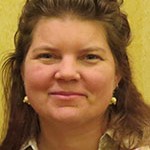 Lauren Goodley is an archivist at the Southwestern Writers Collection at the Wittliff Collections, Alkek Library, at Texas State University-San Marcos. She is responsible for developing and implementing a digital preservation program for the archives, the collections of which include a substantial amount of audio/visual materials. Lauren graduated from the iSchool at the University of Texas at Austin and previously worked as an archivist at the Texas General Land Office, where she led a team including the Austin Public Library on a project to digitize materials relating to the author O. Henry. She is a certified archivist and will earn a Digital Archives Specialist Certificate from the Society of American Archivists in 2013. She attended the first Library of Congress Digital Preservation Outreach and Education (DPOE) train-the-trainer workshop in 2011.
Lauren Goodley is an archivist at the Southwestern Writers Collection at the Wittliff Collections, Alkek Library, at Texas State University-San Marcos. She is responsible for developing and implementing a digital preservation program for the archives, the collections of which include a substantial amount of audio/visual materials. Lauren graduated from the iSchool at the University of Texas at Austin and previously worked as an archivist at the Texas General Land Office, where she led a team including the Austin Public Library on a project to digitize materials relating to the author O. Henry. She is a certified archivist and will earn a Digital Archives Specialist Certificate from the Society of American Archivists in 2013. She attended the first Library of Congress Digital Preservation Outreach and Education (DPOE) train-the-trainer workshop in 2011.
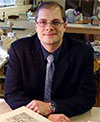 Jacob Nadal has been the Director of Library and Archives at Brooklyn
Jacob Nadal has been the Director of Library and Archives at Brooklyn
Historical Society since April 2012. From 2008-2012, he served as the
Preservation Officer for UCLA Library and from 2005-2008, he worked as the Field Service Librarian and Acting Head of Collection Care in the Preservation Division of The New York Public Library. He earned his Masters in Library and Information Science from Indiana University, Bloomington where he also held several jobs including as the head of the E. Lingle Craig Preservation Laboratory, from 1999-2005. Mr. Nadal has specialties in digital preservation, collection-wide preservation strategies, and disaster recovery. Highlights of his professional work include American Library Association’s definitions of digital preservation, a research project on scarcity issues in preservation, and project in Liberia to salvage the William V. S. Tubman’s personal papers and other Liberian documents. He also teaches classes for graduate library students, primarily at the Pratt Institute, supervises internships, and gives occasional seminars for working professionals and the public. He is currently Chair of the American Library Association Preservation and Reformatting Section and in past years, served on the steering committee of the California Preservation Program and as the chair of several American Library Association Interest Groups and Working Groups.
Danielle Cunniff Plumer is a digital collections consultant working with cultural heritage institutions interested in putting their collections online. From 2005 to 2011, she coordinated the Texas Heritage Online program at the Texas State Library and Archives Commission. In that capacity, she consulted with and assisted participants from the library, archives, and museum communities who were developing digital library projects. A key part of her job was monitoring and participating in the development of standards and guidelines for digital projects including digitization, metadata, interoperability, controlled vocabularies, and preservation. She also has extensive experience with grant writing, metadata harvesting and normalization, and user-centered design. She earned an M.S. in Information Studies at The University of Texas at Austin in 2003. Prior to that, she earned a Ph.D. in medieval English literature at the University of California, Davis. She currently serves as the ALA co-chair for the Society of American Archivists, American Library Association, and American Alliance of Museums Joint Committee on Archives, Libraries, and Museums. Her technical skills include programming in PHP, Python, and Java as well as various command-line utilities. Her personal interests include genealogy and astrophotography.
Jefferson Bailey manages METRO’s strategic initiatives including program development; research and publications; new technologies and member services; and other special events and projects to support METRO’s strategic goals. Before joining METRO in 2012, Jefferson worked on digital preservation projects for the National Digital Information Infrastructure and Preservation Program (NDIIPP) and Digital Preservation Outreach and Education (DPOE) program in the Office of Strategic Initiatives at the Library of Congress. There he worked on projects associated with the National Digital Stewardship Alliance (NDSA), the Viewshare platform, personal digital archiving initiatives, and the National Digital Stewardship Residency (NDSR) program. Previously, he managed digital projects at Brooklyn Public Library and at Frick Art Reference Library and has done archival work at NARA and NASA. He received his MLIS with a specialization in archival studies from the University of Pittsburgh and his undergraduate degree from Oberlin College.
Liz Bishoff is principal partner of The Bishoff Group, L.L.C., a Library and Cultural Heritage Organization consulting services organization. Previously, she was the director of Digital and Preservation Services, BCR, Inc. She has also served as vice president for Digital Collection Services at OCLC and as the executive director of the Colorado Digitization Program. She has worked with libraries and museums on various aspects of their digitization initiatives, including development of digital preservation plans. Under several IMLS National Leadership Grants, she led the development of collaborative best practices in metadata and digital imaging resulting in the widely adopted CDP Metadata Dublin Core Best Practices and the Digital Imaging Best Practices. She is an active member of the American Library Association where she serves as the ASCLA representative to ALA Council; she previously served on the ALA Board and is a past treasurer of the ALA. Liz holds an MLS from Rosary College and has post-graduate work in public administration at Roosevelt University.
Thomas F. R. Clareson joined PALINET in October 2005. He led PALINET’s digital collections creation and management services, preservation services, and consulting activities, and was responsible for establishing new services and funding sources, grant writing, and outreach to the museum and historical society communities. When PALINET became LYRASIS in 2009 following the merger of PALINET, SOLINET, and NELINET, he took on the role of program director for New Initiatives, in which he consults nationally and internationally on preservation, digitization, special collections/archives, remote storage, funding, and advocacy issues. He holds an MLS from Kent State University, an MA from Ohio State University, and a BA from Ohio Wesleyan University. Formerly a representative from the Society of American Archivists to the Joint Committee on Archives, Libraries, and Museums, he currently serves on the Board of Trustees of Heritage Preservation, the national institute for preservation and conservation advocacy. Throughout his 20-year career in preservation and digitization services, he has consulted and worked with all types and sizes of academic and public libraries, archives, museums, and various other cultural heritage institutions. He has successfully conducted over 200 site surveys covering preservation, digitization, and special collections-related issues.

